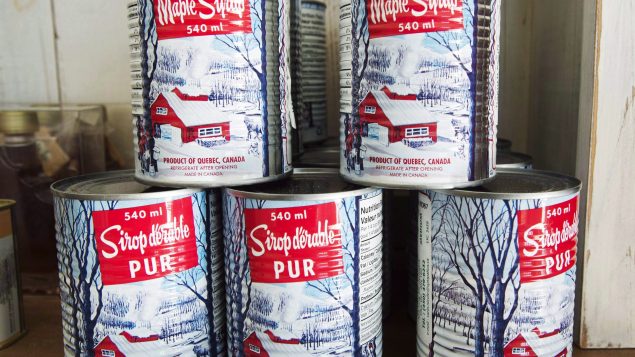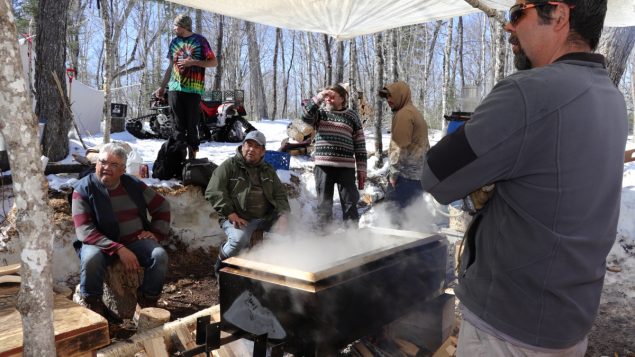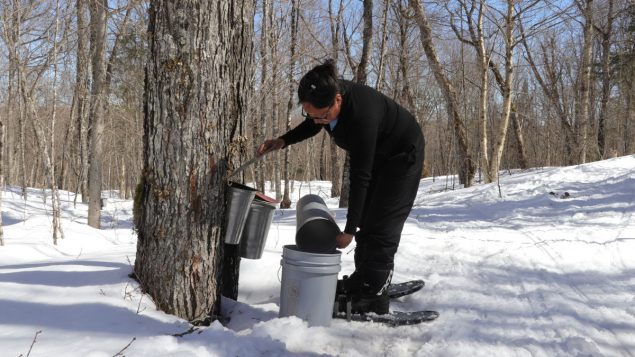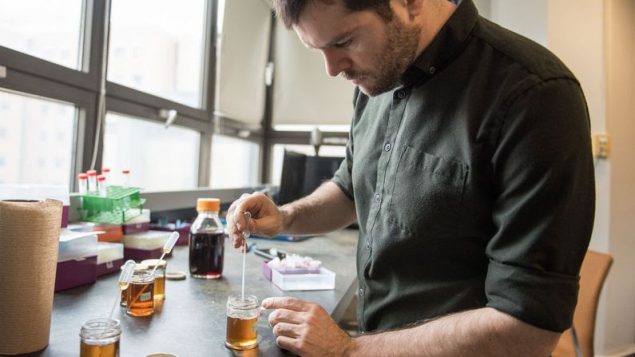Researchers at Université de Montréal have developed a new test using gold nanoparticles to quickly determine the flavour of maple syrup and help producers evaluate the quality of this iconic Canadian product often referred to as Quebec’s liquid gold.
While the artificial “tongue” can’t distinguish the complex flavour profiles that a human tongue can, it has its advantages, said Université de Montréal (UdeM) chemistry professor Jean-François Masson.
It uses a colorimetric test that detects in a matter of seconds changes in colour to show how a sample of maple syrup tastes, said Masson who led the study, which was published in Analytical Methods, one of the journals of the Royal Society of Chemistry, in the United Kingdom, on Tuesday.
“Our device works specifically to detect flavour differences in maple syrup as it’s being produced,” Masson said.
All it takes is a few drops of syrup in the gold nanoparticle reagent.
If the result stays in the red colour spectrum, it means the new batch of syrup is of premium quality and can be sold in grocery stores or exported.
If, on the other hand, the test turns blue, the syrup may have a flavour “defect”, which may be treated as an industrial syrup for use in food processing.
Over 1,800 samples of maple syrup used

Maple syrup cans are seen at a sugar shack in Oka, Que., on Feb. 10, 2017. (Ryan Remiorz/THE CANADIAN PRESS)
Simon Forest, the study’s first author, said researchers used over 1,800 samples of maple syrup from the 2018 harvest in Quebec to validate their test, which was developed at the request of the Québec Maple Syrup Producers to detect the presence of different flavour profiles.
The syrups from different regions of the province represented the various known aromatic profiles and colours: from golden to dark brown, Forest said.
Maple syrup, which is derived from the sap produced by maple trees in early spring, has a molecular complexity similar to that of wine, researchers said.

Atikamekw maple syrup: an ancestral tradition carried on with passion in Manawan, Quebec. (Marie-Claude Simard/RCI)
As the sap gets boiled down to a syrup, producers use specialized human tasters – similar to those used by wine and liquor producers – to judge which profile each new batch of syrup fits into.
And just like wine, the taste of maple syrup changes according to a variety of factors, including the harvest period, the region, production and storage methods and, of course, the weather.
Variation in temperatures during the harvesting, when sap is collected from trees, can greatly affect the taste profile of the product, researchers said.

Atikamekw maple syrup producer collects sap from maple trees in Manawan, Quebec. (Marie-Claude Simard/RCI)
Producers distinguish as many as 60 categories of maple syrup, ranging from caramelized to woody, green, smoked, salty or burnt.
“The development of the artificial tongue is intended to support the colossal work that is being done in the field to do the first sorting of syrups quickly and classify them according to their qualities,” said Masson.
The artificial tongue developed at UdeM could also someday be adapted for tasting wine or fruit juice or be used in other food production contexts, he added.







For reasons beyond our control, and for an undetermined period of time, our comment section is now closed. However, our social networks remain open to your contributions.